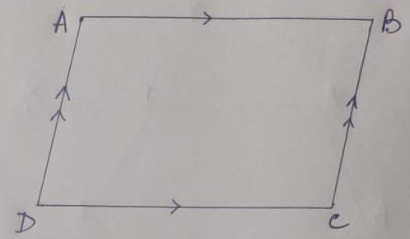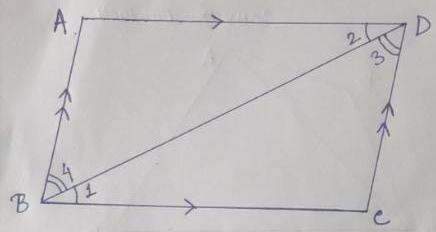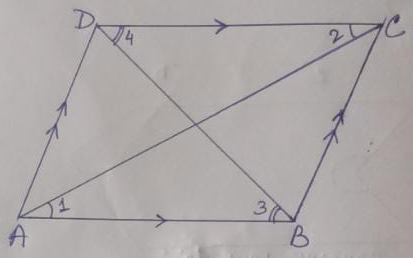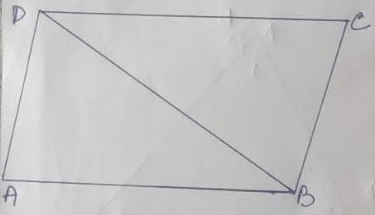CLASS-8
THEOREM OF PARALLELOGRAM
Parallelogram –

A quadrilateral will be considered as a parallelogram when its opposite sides are parallel. In the figure, ABCD is a parallelogram, in which DC is parallel to AB & DA is parallel to CB. A parallelogram has some special properties which we learn –
Theorem.1)
1) The opposite sides of a parallelogram are to be considered equal.
2) The opposite angles of a parallelogram are to be considered equal.
3) Each diagonal bisects a parallelogram into two congruent triangles.

Given – ABCD is a parallelogram in which BC || AD and BA || CD .
To Prove – 1) BC = AD and BA = CD
2) ∠A = ∠C and ∠B = ∠D
3) ∆ BCD ≅ ∆ DAB and ∆ BCA ≅ ∆ DAC
Construction – Join the point B & D
Proof - in ∆ BCD and ∆ DAB
∠1 = ∠2 (BC || AD, alternate angles are equal),
BD = BD (Common)
And, ∠3 = ∠4 (BA || CD, alternate angles are equal),
So, ∆ BCD ≅ ∆ DAB (A-S-A condition of congruency),
So, the corresponding parts of the triangles are equal
So, BC = AD and BA = CD (Proved)
Also, ∠A = ∠C
We have, ∠1 = ∠ 2 and ∠4 = ∠3
So, ∠1 + ∠ 4 = ∠2 + ∠3
=> ∠B = ∠D
So, ∠A = ∠ C and ∠B = ∠ D (proved)
Now, ∆ BCD ≅ ∆ DAB (Proved already),
Similarly, ∆ BCA ≅ ∆ DAC
Hence, each diagonal bisects the parallelogram into two congruent parts. (proved)
Theorem.2) The diagonals of a parallelogram bisect each other.
Given - ABCD is a parallelogram in which AB || DC, AD || BC and the diagonals AC & BD intersect at the point O.

To prove – OA = OC, and OB = OD
Proof - ∆ OAB and ∆ OCD
∠OAB = ∠OCD (AB || DC and alternate angles are equal)
AB = DC (Opposite sides of a parallelogram are equal)
And, ∠OBA = ∠ODC (AB || DC and alternate angles are equal)
∆ OAB ≅ ∆ OCD (A-S-A condition of congruency)
So, the corresponding sides of ∆ OAB and ∆ OCD are equal
So, OA = OC and OB = OD (proved)
Theorem.3) If a pair of opposite sides of a quadrilateral are equal and parallel, the quadrilateral is a parallelogram.

Ans.) Given – ABCD is a quadrilateral in which AB = DC and AB || DC.
To prove – ABCD is a parallelogram
Construction – Join the point B & D
Proof – In ∆ ABD and ∆ CDB,
AB = DC (Given)
∠ABD = ∠CDB (AB || DC and alternate angles are equal)
BD = DB (common side)
∆ ABD ≅ ∆ CDB (S-A-S condition of congruency)
So, it can be concluded the corresponding parts of these triangles are equal
So, ∠ADB = ∠CBD, but these are alternate angles, so AD || BC.
Thus, AB || DC and AD || BC.
Hence, ABCD is a parallelogram.